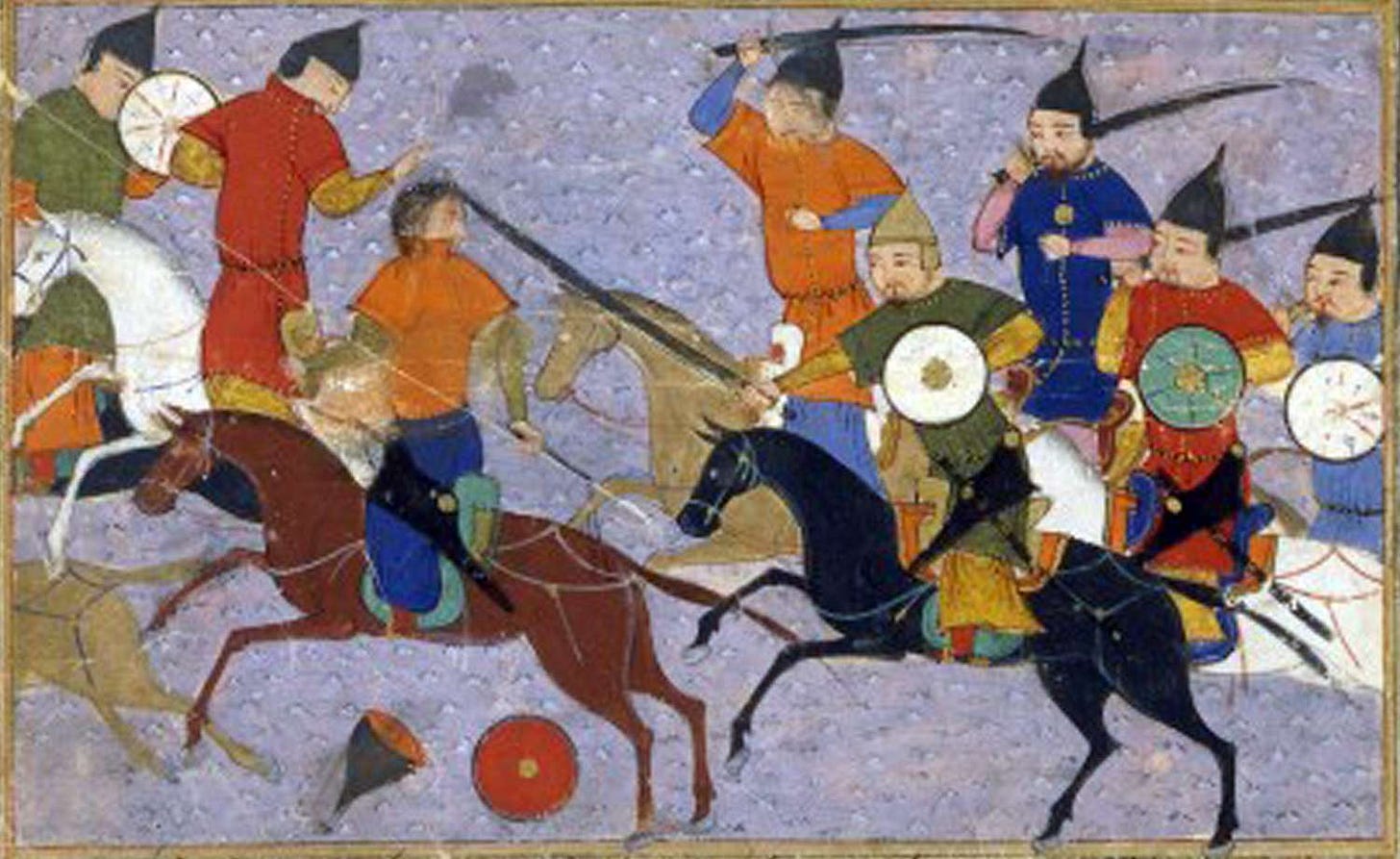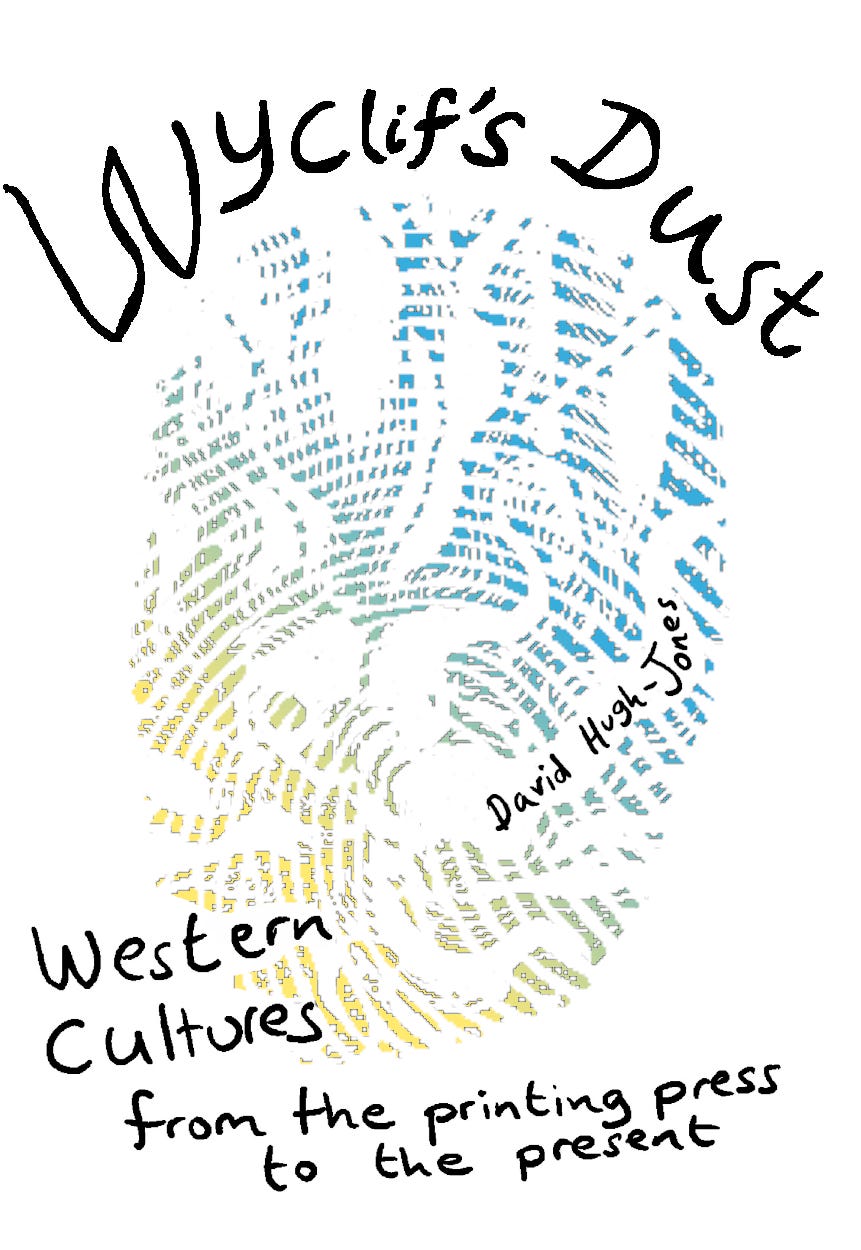Here’s a question:
A common and natural way to think about war is that ultimately the bigger economy wins. Great generalship can make tactical differences, but at macro level what matters is how many tanks and shells you can produce. Philip O’Brien has made this argument about World War II, for example. If so, surely Ukraine, with Europe’s backing, should be able to beat Russia, because Russia’s economy is about as big as Italy’s.

And yet that’s not what the world looks like today.
Some obscure economic models from the 1990s might help to explain this. These models were meant to capture the economics of anarchy, a situation without a ruler to enforce contracts or property rights. Now, the international system is famously an anarchy: there is no official policeman (though a strong enough power may choose to act like one). So, taking the actors as individual states, these models might apply.
In a standard model of the economy, the actors produce goods and services for sale in the market. Under anarchy, they still produce goods, but they also devote effort to defending what they produce, or taking what others make. So, states split their effort between production and defence. Total production becomes a prize to be fought over: states’ defence spending determines how this prize is split between them.
This simple setup generates some interesting results. In particular, more economically productive states don’t always spend more on war. That’s because an increase in your own economic productivity makes it relatively more attractive to devote more resources to production (and therefore less on war), even if the other state will take some of what you make.
…the poorer side is generally motivated to invest relatively more heavily in fighting effort. So conflict can be an income-equalizing process.
Hirshleifer 1991
Sergios Skaperdas makes some comments applying this model to history:
It could be argued that the player with more valuable resources for useful production should be better in the production of arms as well…. I do not deny that this may be true in certain cases…. it could be argued equally well that those with less valuable productive resources tend to specialize in arms production…. In the latter case, the power of the less usefully productive party would be reinforced. This last case seems to accord well with the historical tendency of nomads and mountaineers, with marginal means of existence, subjugating peasants cultivating the richer lowlands…
Skaperdas 1992
Applying this insight, you can think of the CRINKly axis of China, Russia, Iran and North Korea as specialists in taking, not making. They — at least, three of them — are economically underdeveloped, but they have invested heavily in arms and warfare. Russia is spending forty percent of its government budget on security and defence. North Korea is an impoverished country with nukes. Iran, cut off from the international economy by sanctions, has put effort into missiles, proxy warfare and a dual-use nuclear program.
For all these countries there’s a case that their leaders are driven by ideology not rational considerations (maybe Putin really believes that Ukraine belongs in Russia), or that militarism helps secure them in power. But it is worth considering what they might get out of it as countries:
Literally, war can win you land and natural resources, plus a population to tax. That may be a partial explanation for Russia’s interest in Ukraine.
In the real world, as opposed to idealized models, trade follows the flag. It’s not by chance that both Trump and Biden were made indignant by Nord Stream gas pipeline from Russia into Europe (and maybe it was the US that sabotaged it?) Ukraine will trade more with the West and less with Russia if it is in NATO and the EU.
Simply the threat of war can get you what you want. Kim Jong-Un wanted Trump to end sanctions in exchange for giving up his nuclear program. This is the “nuisance value” strategy.
You can also imagine the dynamic versions of the model above. Think of a period of economic growth, which results in increased wealth. That has two effects: first, the richer country can spend more resources on the military. But on the other hand, there’s more incentive for other countries to try to expropriate that wealth.
It’s not obvious which will dominate at any time. In the eighteenth century, insightful Western Europeans realized that they no longer faced a threat from barbarian hordes:
Mathematics, chymistry, mechanics, architecture, have been applied to the service of war; and the adverse parties oppose to each other the most elaborate modes of attack and of defence…. Cannon and fortifications now form an impregnable barrier against the Tartar horse….
Gibbon, Decline and Fall XXXVIII
But the wealth of the Italian city-states, who were then the most economically advanced part of Europe, did not protect them from the Kings of France:
Today the wealthy states of the West are again threatened by taker states. On their own, Iran and North Korea are more like aggressive beggars than competitors. But Russia is a more serious challenger. And behind these three lies China. China has specialized in making, not taking, but it wants to change the rules of international trade, or at least the set of trading alliances. It faces a strong temptation to bankroll the other three states so as to make trouble for its rivals, using them as hired thugs.
The economics of anarchy contradict two widely-told master stories about the modern world. The liberalism of Francis Fukuyama argues that the democratic capitalist state is the end of history, since it is the most efficient political and economic form. But if international anarchy is a permanent condition, then economic prosperity will always generate incentives to snatch it. Taker states are unlikely to be liberal or democratic: they aren’t usually nice places for ordinary citizens, because they spend their resources on guns, not butter.
Economic models of international trade have different countries peacefully specializing in comparative advantage, or in more modern versions, sharing different parts of globalized supply chains. But these models don’t mention how trade contracts get enforced under international anarchy. In reality, economics and politics are linked, and trade often follows the flag, or free-trade areas are guaranteed by an international hegemon. That in turn changes what is economically optimal. In a peaceful world, it makes total sense to let the Chinese company DJI sell drones to America, or Huawei provide Europe’s telecoms infrastructure. In a world of potential conflict, that is less obvious. In turn, increasing economic nationalism may boost the returns to conflict.
I have gone paid. Now is a great time to subscribe and support my writing. It costs just £3.50/month, and yearly subscribers get a great big 40% discount, plus a free copy of my book:






